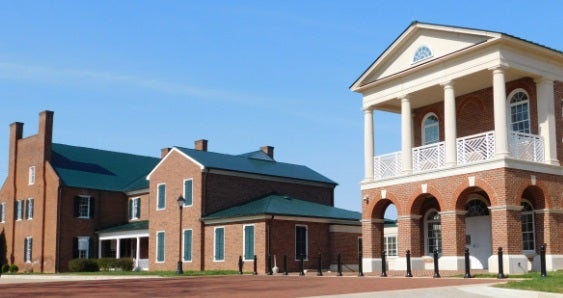Census data highlights a problem for Charlotte County
Published 8:00 am Friday, February 24, 2023
|
Getting your Trinity Audio player ready...
|
The University of Virginia’s Weldon Cooper Center says that Charlotte County is mainly stagnant, when it comes to population changes. The research team, which monitors population and census data, found Charlotte lost 0.8% of its population over the last two years. Other counties in the region weren’t so lucky. More people are moving to the region, but not enough to offset the losses due to an aging population.
As Hamilton Lombard, the Center’s demographer explains, there are two ways you can grow population: more people moving in than out, or more births than deaths.
“When you look at the region, with the exception of Appomattox County, every locality has had more deaths than births,” Lombard explained. “Some of that is COVID, but rural areas have had an aging population that’s catching up with them.”
Other counties see losses
Data from the Weldon Cooper Center shows population losses for Buckingham (-0.1%) and Prince Edward (-2.1%), while Cumberland and Lunenburg counties population grew 2.1 percent and 0.2 percent respectively.
“Cumberland and Lunenburg had been declining over the last couple of years, but now we’ve seen a boost of people moving out to rural areas particularly since 2020,” Lombard said. “There’s more affordable housing, you have more space, it’s quiet, that’s really what has boosted growth in those two counties.”
In Lunenburg, the Center’s estimates show grew from 11,936 to 11,958 over two years. Now the question is how to keep that positive momentum going.
Lunenburg County Administrator Tracy Gee says they’re working to bring in more industrial opportunities, along with enhanced cellular and broadband services.
“We are working on our cell tower ordinance to make it more desirable for tower site location in our locality,” Gee said, hoping the services will entice more people to live in Lunenburg with the capability to work from home if they wish.
Cumberland County Administrator Derek Stamey says, the suburban lifestyle is something that’s not for everyone anymore.
“Folks want to live where they’ve got some room, they want to live where they’ve got some space,” Stamey explained. “A lot of folks are interested in raising poultry, things like that. I think the rural lifestyle is appealing to people.”
Stamey says the Pandemic could have been the cause for this. But Lombard notes, COVID also caused a lot of issues with the Census’ data collection this past year.
Looking at the state as a whole, Lombard explains the growth has stagnated significantly. Virginia’s population has grown by only 52,000 in the last two years, after expanding by more than 180,000 between 2010 and 2012. Lombard says though a large percentage of growth came from Northern Virginia over the last couple of decades, it’s not really growing anymore.
“If you count the northern counties, it’s just been growing a little bit the last couple of years,” he said. “Virginia has sort of lost its engine of growth, and that’s slowed our overall statewide growth down. When you lose one area where you had a lot of growth, it really slows the growth of your statewide population.”
But returning to the focus on rural communities, he reiterates that glimmer of hope.
“We’ve seen a lot of rural counties, like Prince Edward, where the number of births are going up – the deaths have been going down for a long time,” he said. “I think families have been moving to those localities, and they’ll see a lot of growth in those localities that they’ve been witnessing since the 2000s.”
Pandemic problems for census data
Weldon-Cooper, which relies on different administrative data to collect its information, says the pandemic caused a lot of problems.
“We use data such as where public school students live, drivers licenses and death data, and residential construction data from local governments,” Lombard explained. “Then it’s a matter of developing a formula that gives you an estimate compared to the actual count. Normally we adjust the formula after the Census, but the past Census had a lot of problems, some because of COVID.”
For example, he explains in Prince Edward County, the Census data was skewed because they missed a good deal of college students who may have returned home to carry out their studies remotely. In order to correct this undercount, they took eight localities with over 20 percent of college students, including Prince Edward County, and benchmarked the 2020 and 2021 populations on their own estimates.
Doug Stanley, Prince Edward County Administrator explains, it’s also about retaining students in the area.
“A lot of folks go away to college and they don’t return, so a part of that is we as a community from an economic development standpoint need to be trying to attract jobs that will bring people back to work here and want to raise a family,” Stanley said.
Looking toward the future, growth in the rural areas dealing with population losses are a way to offset that difference.
“Certainly something like the data center project that Prince Edward County is working on and we’ve got SOVA innovation coming downtown,” Stanley said. “I see some great opportunity on the horizon, but that’s certainly a goal of ours, to not only create jobs, but ones that will bring and keep people here, and stabilize population figures.”





